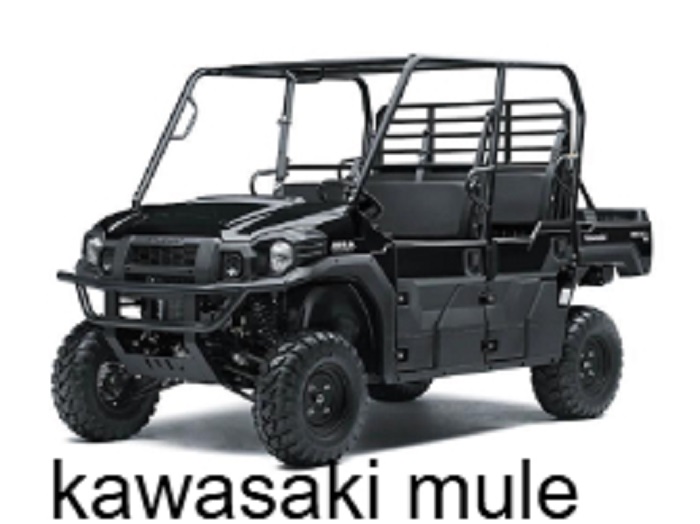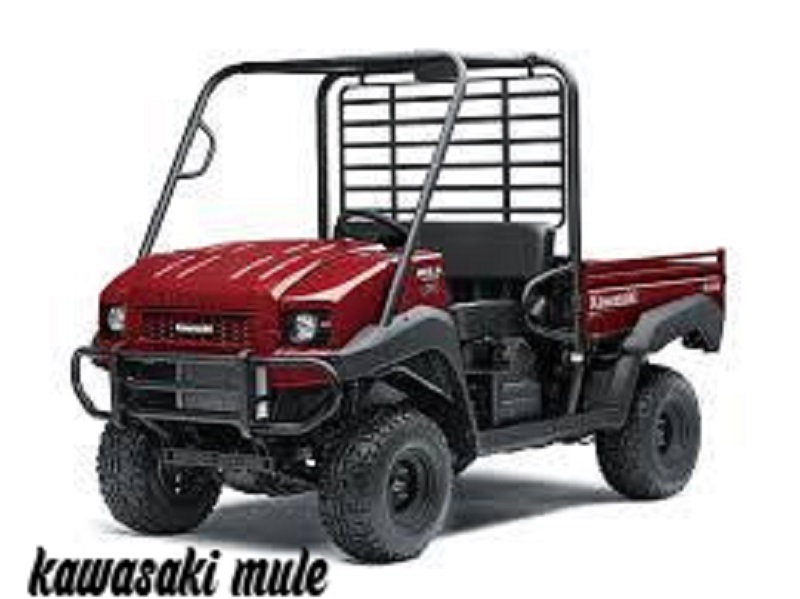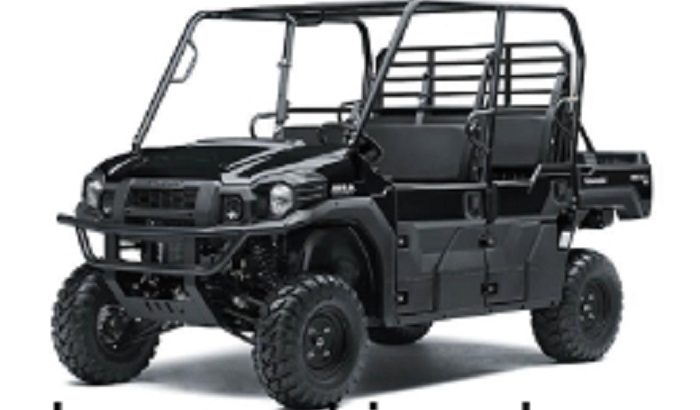
The Kawasaki Mule represents a paradigm of engineering excellence within the Utility Terrain Vehicle (UTV) sector, renowned for its robust design, multifunctionality, and reliability. Initially conceptualized to meet the operational demands of agriculturalists, industrial workers, and outdoor professionals, the Mule has evolved to become a formidable competitor in the UTV market. This article provides a technical evaluation of its developmental trajectory, key features, and applications, demonstrating its status as an industry-leading workhorse.
Historical Development and Technological Evolution
Introduced in 1988, the Kawasaki Mule (Multi-Use Light Equipment) emerged as a response to the increasing need for off-road vehicles capable of transporting materials and personnel across varied and challenging terrains. Unlike conventional All-Terrain Vehicles (ATVs), which prioritize agility and speed, the Mule was engineered with load-bearing capacity, stability, and operational efficiency as primary design considerations.
Successive iterations of the Mule have integrated cutting-edge automotive technologies, including electronic fuel injection (EFI), hydraulic disc braking systems, enhanced payload capacities, and differential locking mechanisms, making them more adept at handling commercial, industrial, and recreational applications. With configurations that span compact two-seaters to heavy-duty diesel models, the Mule’s adaptability continues to set benchmarks in the UTV industry.
Core Engineering Features of the Kawasaki Mule
1. Structural Integrity and Chassis Reinforcement
The Kawasaki Mule is constructed with an industrial-grade tubular steel frame, providing exceptional torsional rigidity. The integration of a corrosion-resistant coating extends the vehicle’s longevity in extreme environmental conditions. This ensures superior performance in high-moisture, dust-heavy, or rugged off-road environments.
2. Advanced Powertrain Options
Mule models are equipped with a diverse array of engine configurations, including 617cc liquid-cooled V-Twin gasoline engines, 812cc three-cylinder powerplants, and 993cc diesel-powered variants. The engine selection is strategically designed to optimize torque output, fuel economy, and mechanical longevity, ensuring suitability for applications ranging from light-duty agricultural transport to heavy industrial hauling.
3. Payload and Towing Capacity Optimization
Payload and towing capacities are critical determinants of UTV efficacy. The Mule boasts payload capacities up to 1,000 pounds, with a towing capacity reaching 2,000 pounds in select models. The reinforced cargo bed and steel-based structural undercarriage provide enhanced stability under maximum load conditions, reducing structural fatigue over prolonged operational periods.
4. Cabin Ergonomics and Operator Comfort
Unlike traditional UTVs, which often feature utilitarian seating arrangements, the Mule incorporates bench-style seating configurations capable of accommodating two to six passengers. The ergonomic design includes high-backed, contoured seating with impact-absorbing padding, ensuring operator comfort during extended usage. Furthermore, advanced models feature modular seating adaptations, allowing conversion between passenger transport and cargo-hauling configurations.
5. Suspension System and Terrain Adaptability
A hallmark of Kawasaki’s engineering prowess, the Mule employs an independent suspension system with coil-over shock absorbers to mitigate terrain-induced vibration and shock loads. This enhanced suspension geometry ensures superior ride quality, especially in environments with uneven or highly abrasive surfaces.
6. Precision-Controlled Electronic Power Steering (EPS)
To reduce operator fatigue and enhance maneuverability, select Kawasaki Mule models integrate Electronic Power Steering (EPS) systems. These systems are engineered to dynamically adjust steering resistance in response to variable terrain conditions, providing greater control in high-resistance environments such as rocky inclines or heavily saturated soil.
7. Drivetrain Adaptability: Selectable AWD and 4WD Configurations
The Mule’s selectable 2WD/4WD system, complemented by an electronic differential-locking mechanism, ensures optimized traction in low-traction conditions. This feature is particularly advantageous for construction sites, mountainous landscapes, and wetland environments, where maintaining torque distribution efficiency is imperative.
8. Fuel Efficiency and Lifecycle Maintenance
Kawasaki has engineered the Mule to emphasize fuel efficiency and low-maintenance operation. The incorporation of advanced fuel injection technologies, high-capacity filtration systems, and low-friction drivetrain components results in extended operational longevity and reduced maintenance intervals. These optimizations minimize mechanical downtime and reduce total cost of ownership (TCO).
Industrial and Commercial Applications
1. Agricultural and Livestock Operations
In the agricultural sector, the Mule is employed for the transportation of feed, irrigation equipment, and livestock supplies. The vehicle’s ability to navigate uneven terrain while carrying substantial loads makes it indispensable in large-scale farming operations.
2. Hunting and Outdoor Expeditionary Use
The Mule’s robust drivetrain and low-noise operation make it a preferred vehicle for hunting expeditions and wilderness navigation. Its ample cargo space allows for the secure transportation of game, supplies, and specialized gear, while its adaptive suspension system ensures minimal terrain disturbance.
3. Industrial and Construction Logistics
In industrial environments, the Mule is frequently utilized for transporting construction materials, tools, and personnel across expansive job sites. The integration of diesel powertrain options enhances fuel efficiency, reducing operational expenditures for large-scale projects.
4. Ranching and Livestock Management
Ranchers utilize the Mule for fence repair, water supply distribution, and herding operations. The ability to traverse rocky and muddy terrains without compromising traction makes it an essential asset for livestock management.
5. Emergency Response and Search-and-Rescue
Due to its ability to operate in harsh conditions, the Mule is employed by fire departments, park rangers, and emergency medical services for rapid deployment in disaster zones or remote locations.

Customization and Aftermarket Modifications
To enhance performance across diverse applications, Kawasaki Mule owners can integrate aftermarket accessories, including:
- High-torque winches for debris removal and vehicle recovery
- Reinforced skid plates for additional undercarriage protection
- LED auxiliary lighting kits for enhanced night-time visibility
- Weatherproof enclosures and cab heating systems for cold-weather operations
- Turf-friendly tires and specialized suspension components for minimized soil disturbance in agricultural applications
Comparative Market Analysis and Economic Viability
From an economic standpoint, the Kawasaki Mule presents a cost-effective alternative to comparable UTV models, providing a favorable price-to-performance ratio. Its low depreciation rate, extended operational lifespan, and minimal mechanical failure rates contribute to high resale value and long-term investment viability.
When evaluated against competing brands such as Polaris Ranger, Can-Am Defender, and John Deere Gator, the Mule consistently excels in maintenance efficiency, payload adaptability, and fuel economy. These attributes reinforce its status as an industry-standard workhorse.
Conclusion: The Kawasaki Mule as an Engineering Benchmark
The Kawasaki Mule stands as a testament to precision engineering, material resilience, and multifunctional adaptability within the UTV sector. Whether for agriculture, industrial logistics, environmental management, or emergency response, the Mule delivers unparalleled performance. With a range of configurations designed to optimize power, fuel efficiency, and mechanical endurance, it remains a premier choice for professionals requiring a versatile, high-durability, and cost-effective UTV solution.
